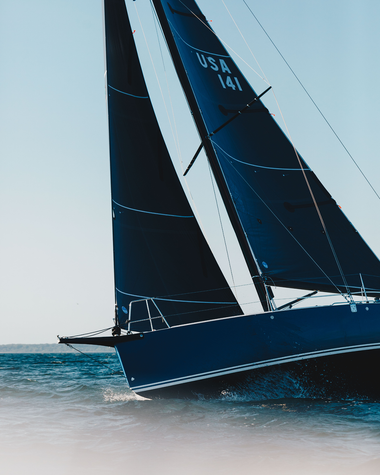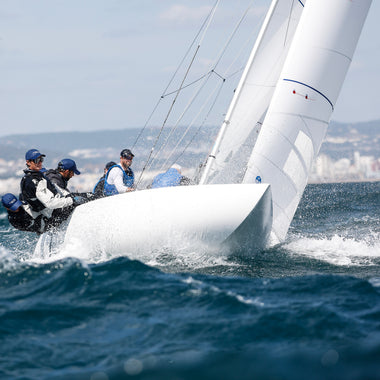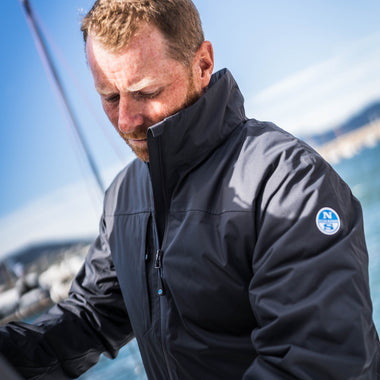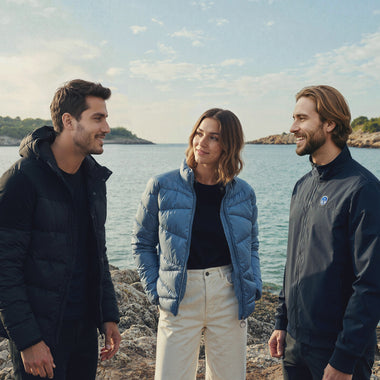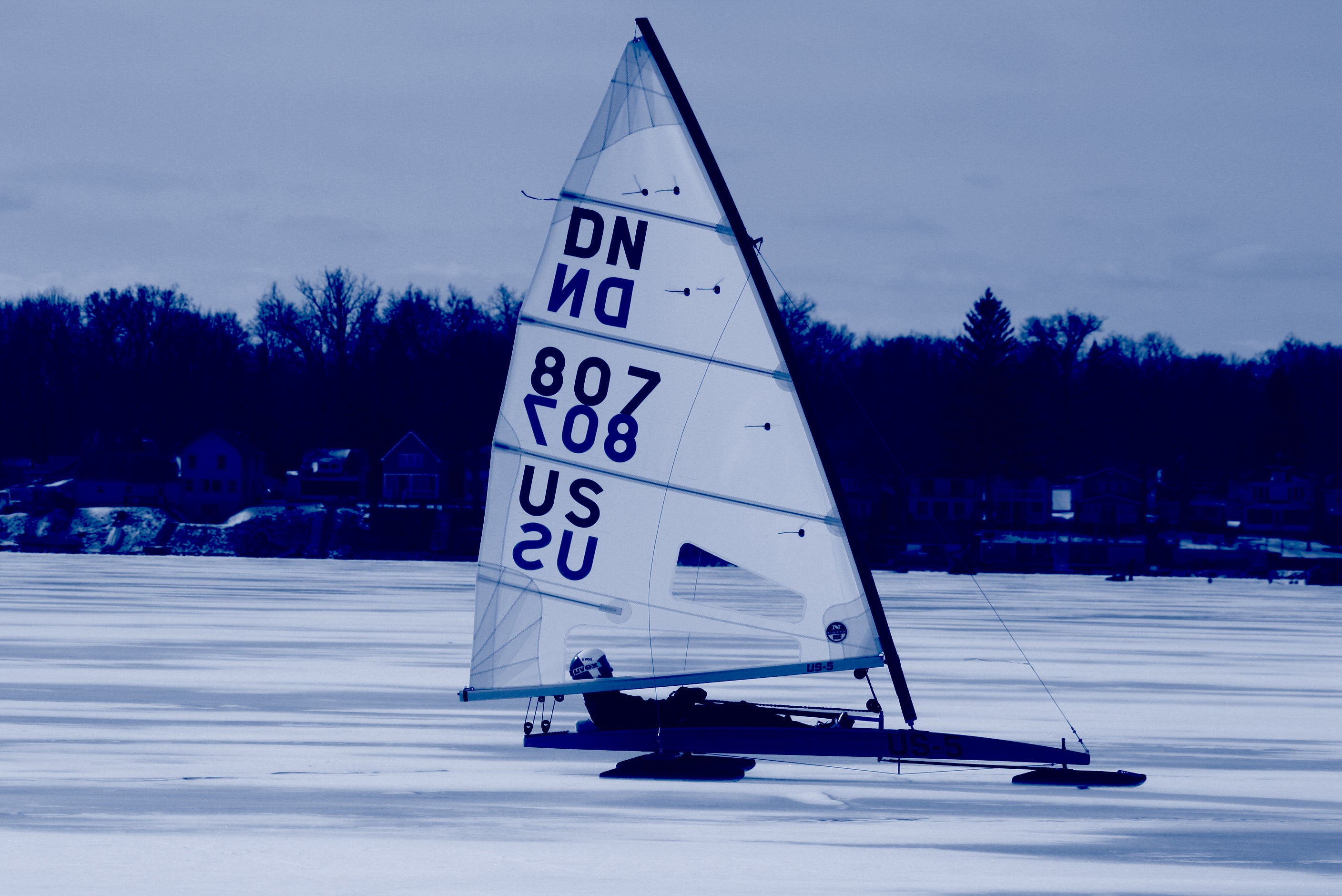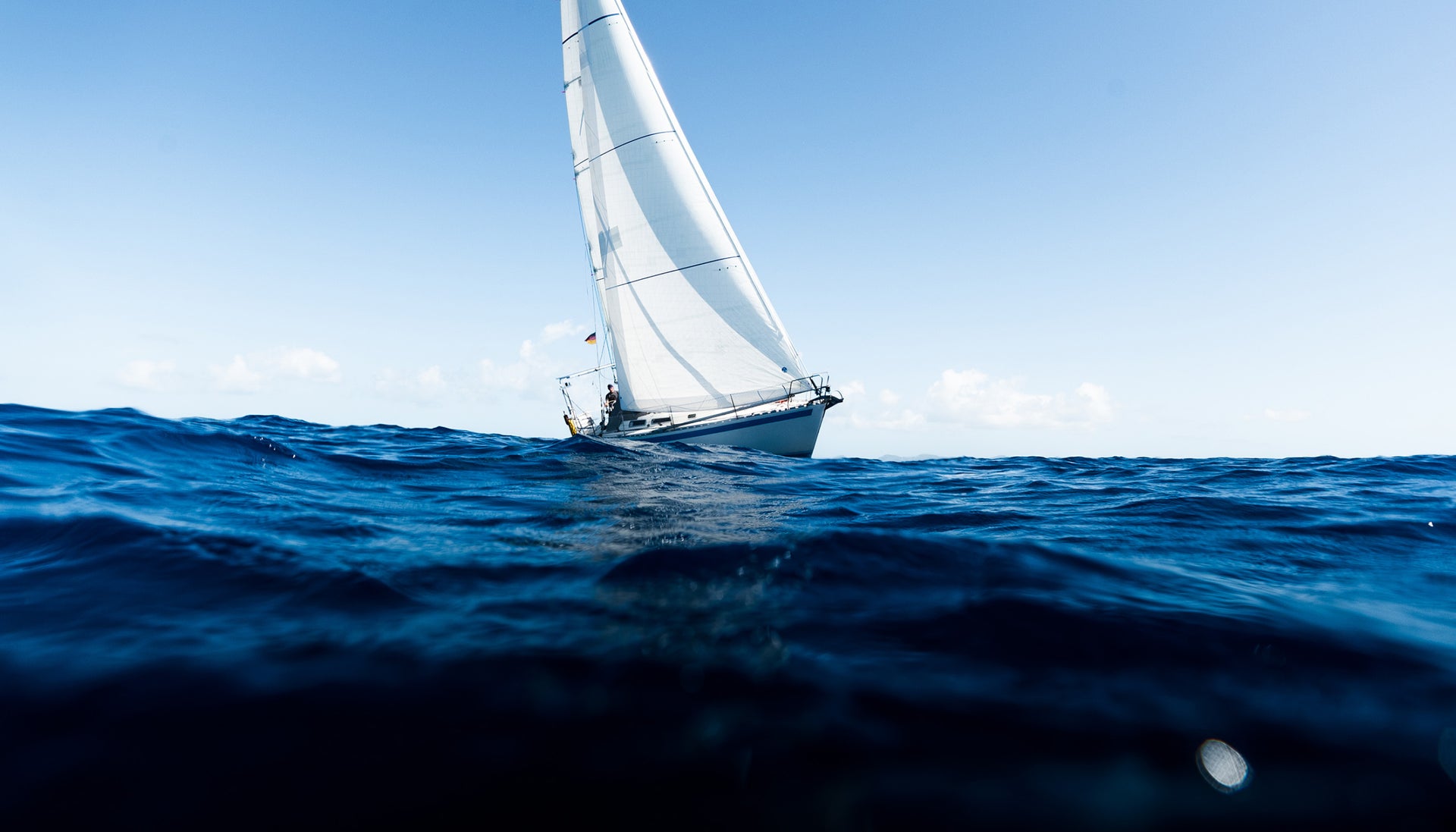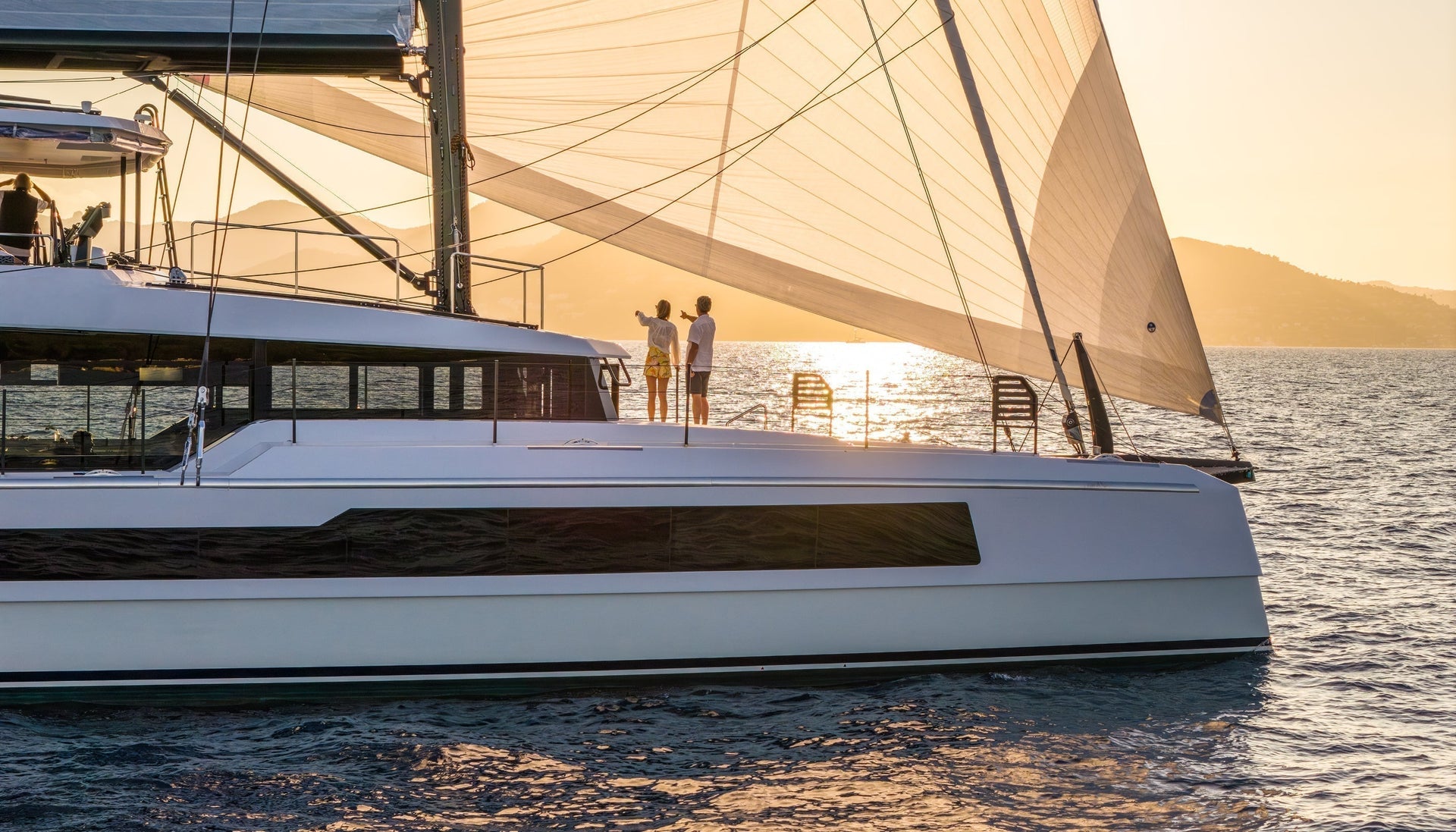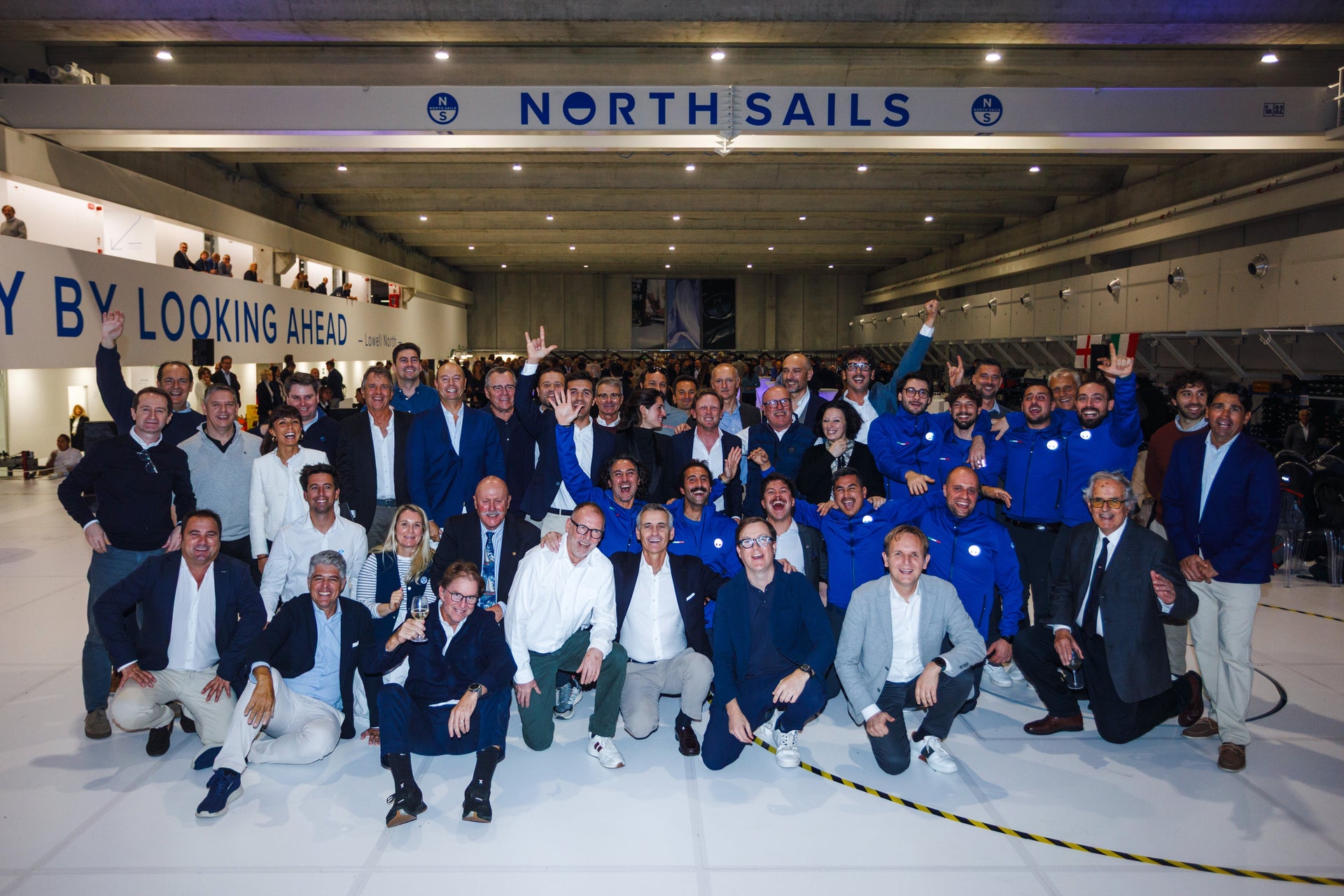INTERVIEW: CHAD ATKINS ON THE NEW DN SAIL DEVELOPMENT
NORTH SAILS DN ICEBOAT SAIL DEVELOPMENT WITH CHAD ATKINS
Sail Designer Mike Marshall Interviews Chad Atkins
You just finished sailing the DN North Americans. What conditions did you encounter at this event and how prepared for them were you?
The NA’s were held in Madison, WI the last week of February on a nice sized plate that had been resurfaced by some rain, wind and warmth just prior to the event. This left a reasonably flat and slightly textured surface that was somewhat soft and would go away quick in bright sunshine but would stay hard under cloud cover and wind. We had sunshine and very light winds that we couldn’t do much with the first few days followed by full on-hold on breeze for a couple days and ending with a light to moderate last day.
I was about as prepared as I could be with two young kids and my wife Kate that puts up with this madness. There were some late nights just prior preparing and aligning runners, making sure the gear I had was in order and thinking about bearing away around that windward mark fully warped out holding on and ripping downwind! Time in the boat is king (unless your Struble- Gonna need non-human life form testing at his next event!) and I got about 6-7 days in through a range of ice and wind conditions.
You spent a great deal of time this winter working with North Sails to design a set of DN sails for the NAs. What was that experience like?
It was interesting, that’s for sure. Starting from scratch there is a lot that goes into trying to break into a well developed class of a fringe sport. I liked that none of us had designed DN sails before so any ideas moving forward were open for experimentation. Even before the boat was set up in the loft and measured to put in the program, we went over the details of the sails that most of us were using and what the goal was for these designs. The first goal was to reduce weight and windage from any external reinforcement and unneeded extra cloth. We got rid of the aluminum headboard, came up with a way to bury the inboard batten pocket caps and flushed out the outboard ends with internal RBS rocket adjusters. The second was to try and have more twist with a similar amount of power at the bottom end. We incorporated a bolt rope that slides in the mast easier and could possibly stretch some as the sail loads up.
It was great that the team over in Sweden shared files so we could use their basic triangle and window layout. The team in San Diego got sails to me on deadlines that would lineup over all the fall and winter holidays. The Rhode Island loft made this happen with modifications and re-cuts. Much appreciated, Thanks!
Many steps are involved when starting from square one to design new sails. Which of these steps was the most interesting for you and why?
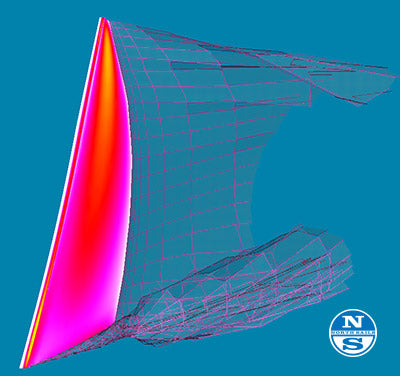 No kidding! These designs just don’t fall out of the computer after an hour! The most interesting thing about DN’s and the speed these little garage rockets have is the mast and how it bends as the boat powers up and takes off. With this the mast/sail combo is key to have match through a wide range of ice surface and wind conditions. In the DN class we are allowed two sails during an event,. Spanning this range with two sails is good for the class but tough on the sail and mast design. I would say the sail testing and modification were the highlight for me as I got to take the design produced, use it, figure out what modes worked or didn’t, then come back and help tweak it on the floor, and get back after it again when the ice allowed. Taking something to battle in which you have invested time has always appealed to me and is a base for the DN class since a lot of us build and tune most of our own equipment.
No kidding! These designs just don’t fall out of the computer after an hour! The most interesting thing about DN’s and the speed these little garage rockets have is the mast and how it bends as the boat powers up and takes off. With this the mast/sail combo is key to have match through a wide range of ice surface and wind conditions. In the DN class we are allowed two sails during an event,. Spanning this range with two sails is good for the class but tough on the sail and mast design. I would say the sail testing and modification were the highlight for me as I got to take the design produced, use it, figure out what modes worked or didn’t, then come back and help tweak it on the floor, and get back after it again when the ice allowed. Taking something to battle in which you have invested time has always appealed to me and is a base for the DN class since a lot of us build and tune most of our own equipment.
How did you decide what changes you wanted to make during the design process? Were you tuning against other boats?
Since we run from stop off the line, the only way to carve or hold your lane is to get in the gym and have a sail that can keep some leech tension early but twist off evenly as the boat accelerates and mast starts to bend. We had the acceleration and speed part down out of the gates but things seemed too open all the time as height early was an issue and I had to keep the boat a few degrees hotter downwind to stay even. Through many design tweaks of what I was feeling and seeing, we were able to get to the NA’s in a very short amount of time with a couple designs that I am excited about moving forward with!
Tuning Partners – yeah, those guys…. I should leave it at that! Seriously though- James “Irving” Thieler or “T” as most know him and Oliver “The Kid” Moore were a big part of fast-tracking this development program forward. They have both been sailing a ton the past few years, here in the States and over in Europe. We say this sport is 50% sailing and 50% social. For the three of us based in RI I think we tip the scales towards social just to get to the ice! Once there we try our best to break out of the coffee induced conversation and get our stuff onto the ice, rigged up, ice checked, marks up, track scouted and right into it.. RI is not an epicenter of iceboating but these guys it make it a lot easier to stay on pace in a tough, warm winter!
 It seemed that your results were improving during the NAs. Did you change anything to accomplish this? Did you start sailing the boat differently?
It seemed that your results were improving during the NAs. Did you change anything to accomplish this? Did you start sailing the boat differently?
The Regatta went from super mellow, calm and un-sailable to full- on overnight. Once the Silver mini Qualifier was finished and the top finishers moved up into Gold Fleet it was time to line ’em up. It was fast and furious for the first race and a bunch of us had gear failures. I broke a mast but luckily didn’t run a shroud over (causing hours of runner work and a new shroud) or create any other havoc while cleaning up and getting back to the pits while the rest of the fleet ripped around the track. I had another mast in the trailer ready to go that Oliver got out to me in record time but racing was cancelled for the day with most of the fleet reaching into the pits on bare poles. Day 4 dawned breeze on again that saw me struggle to find my settings in the first race and gradually start clawing my way through the chain fight. Day 5 of the new NA format was going to be it. Awesome because under the old format we would have been headed home on a nice light- moderate day of sailing and it was only Friday. I woke up early and got down to the boat to move my plank forward, mast step back, and mast socket forward each one hole, tightened the side stays and had the shrouds just tight with my weight on the plank, then off for some good tuning while the breeze was settling in. I was going pretty good against “T” so left everything as is for the first few races. As the breeze built through the day I slowly tightened the headstay maybe a full turn by the last race. It was a great day and pretty cool to have to sail into the measurer’s zone race after race.
Finally, where do you currently stand in the sail design process? What’s your plan going forward and how do you improve from here?
The design and trial process was a bit of chutes and ladders going up against designs that have been proven and tweaked for the last 15+ years. I am psyched to have done what we did in just a couple of months with very limited ice time here in the east. I feel like we have developed two solid designs that are a touch on the fuller side but have tested well at the NA’s and a few times after. I think the next step will be to refine the speed sail and get that up and tested as best we can in the warmer months to roll right into the GWC the first weekend of December somewhere in Minnesota. I guess most of us can start thinking of soft water for a month or two unless you are headed to Thunder Bay, Ontario or Lake Baikal in Siberia. Good luck and congrats to Matt Struble as well. Nice to have him back in the fleet to see where the bar is set leading into a North American Worlds next year.
